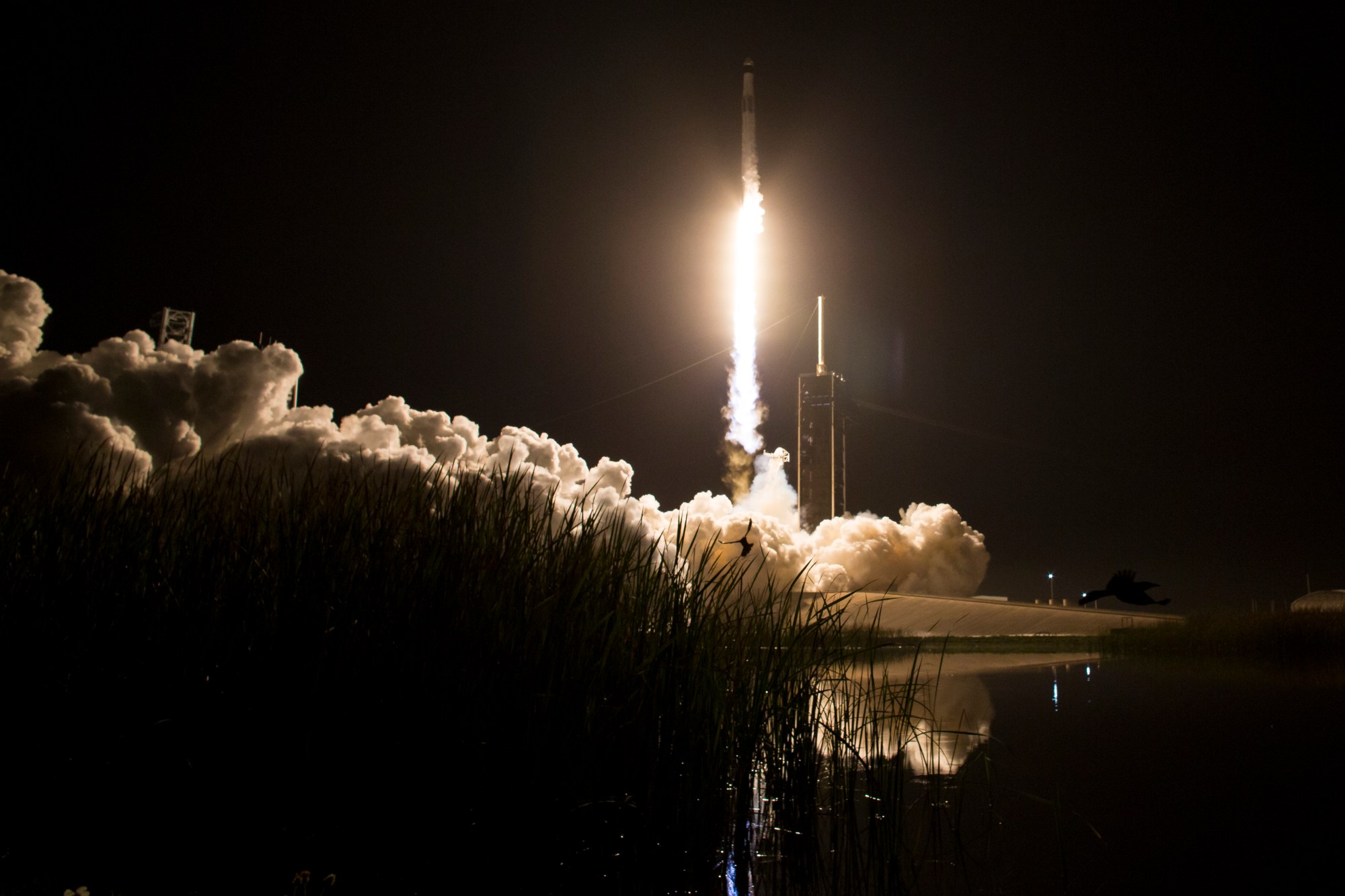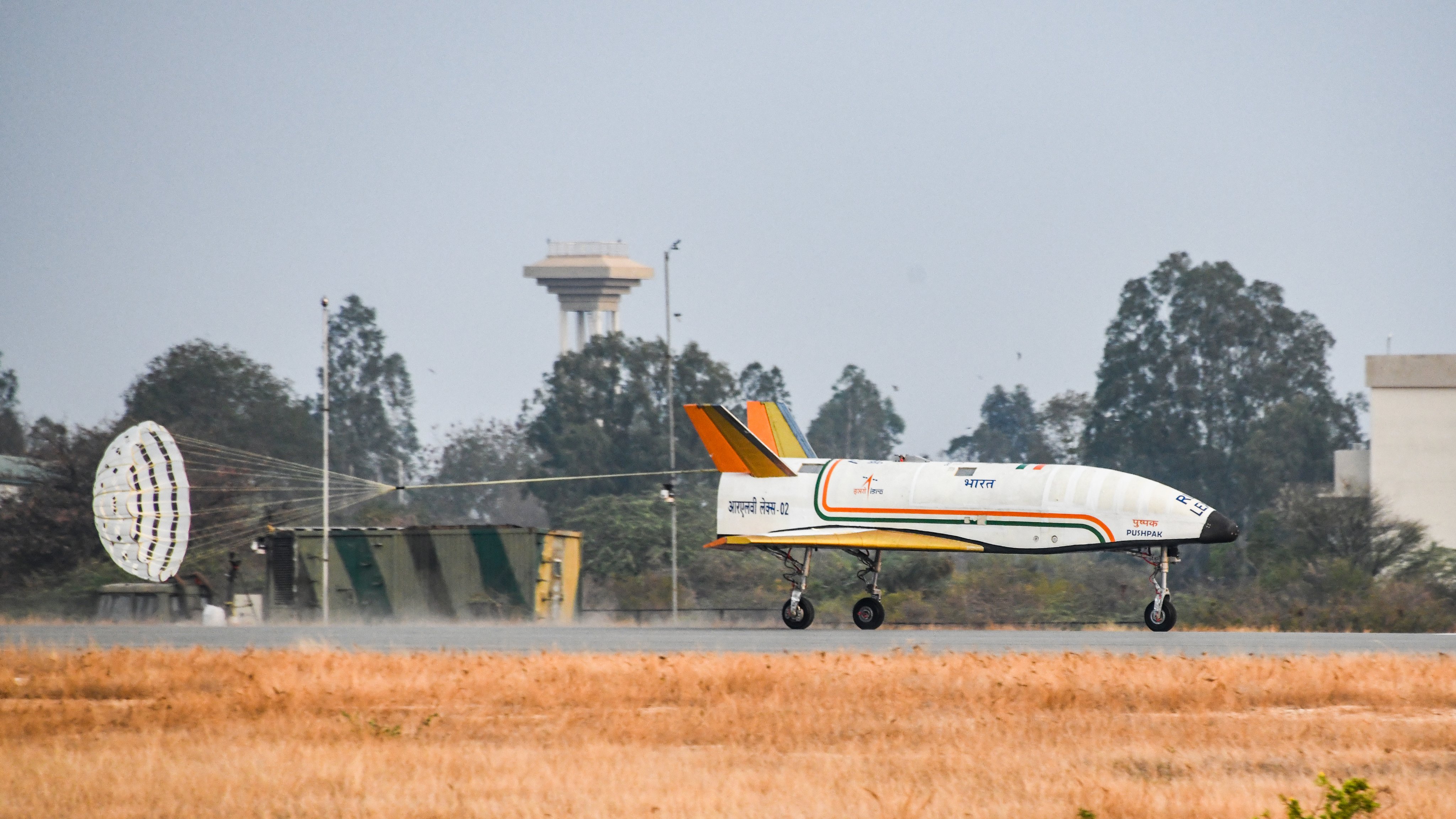-
SpaceX Crew-8 Launch
3rd March 2024

A SpaceX Falcon 9 rocket carrying the Dragon spacecraft. Credit: nasa.gov
On March 3, 2024, SpaceX launched its Crew-8 mission from Kennedy Space Centre in Florida. The Falcon 9 rocket launched at 10:53 PM EST, taking four astronauts, Matthew Dominick, Michael Barratt, and Jeanette Epps from NASA, together with Alexander Grebenkin from Russia. This is one of the missions that are part of NASA's Commercial Crew Program, indicating the cooperation of nations in their space exploration. The Crew Dragon spacecraft, called Endeavour, docked at the ISS on 5 March, from where they will spend the next six months doing more than 200 cool science experiments in microgravity. That is one huge win for SpaceX and human space travel!
References
SPACE.com. "SpaceX launches Crew-8 astronaut mission to International Space Station for NASA." [ space.com]
NASA. "NASA’s SpaceX Crew-8 Launches to International Space Station" [ nasa.gov]
Kennedy Space Centre. "NASA's SpaceX Crew-8." [ kennedyspacecentre.com]
-
KAIROS Launch Failure
13th March, 2024

Rocket KAIROS explodes seconds after liftoff from Kii Space Port. Credit: reuters.com
March 13, 2024, saw another reverse for Japan. Just some five seconds into liftoff from the Kii Space Port, KAIROS, its latest launch rocket meant to boost a small satellite to orbiting altitude, went down and exploded in flight with failure due to an apparently misdirected trajectory.
Though disappointing for the engineers and technicians involved in the KAIROS program, this incident is a reminder of the risks associated with space exploration. There are already investigations underway to determine what went wrong and how future launches can be improved.
Despite this failure, Japan is committed to furthering its space capabilities through innovative technologies and partnerships within the commercial sector. The KAIROS program was designed to enhance Japan's competitiveness in the burgeoning small satellite market, which has seen increasing demand for rapid deployment capabilities.
References
SPACE.com. "Japan's 1st commercial rocket explodes shortly after liftoff." [ space.com]
Reuters. "Space One's Kairos rocket explodes on inaugural flight" [ reuteres.gov]
-
March Equinox
20th March, 2024
The March equinox—aka the vernal equinox—marks the sun’s crossing above Earth’s equator, moving from south to north. Earth’s tilt on its axis is what causes this northward shift of the sun’s path across our sky at this time of year. Earth’s tilt is now bringing spring and summer to the Northern Hemisphere. At the same time, the March equinox marks the beginning of autumn—and a shift toward winter—in the Southern Hemisphere.

On the equinox, the Earth's axis is perpendicular to the Sun's rays. Credit: tadst.com
References
Wikipedia. "March equinox." [ wikipedia.org]
Space.com. "Vernal equinox 2024 brings spring to the Northern Hemisphere today." [ space.com]
-
ISRO’s RLV Landing Experiment
22nd March, 2024
ISRO has successfully completed the RLV LEX-02 landing experiment on March 22, 2024, at the Aeronautical Test Range in Chitradurga, Karnataka. This is an important milestone in the technology of reusable launch vehicle technology, wherein the autonomous landing of the RLV was carried out under challenging conditions. In this experiment, the winged vehicle, Pushpak, was airlifted by an Indian Air Force Chinook helicopter and released from an altitude of 4.5 km. After release, Pushpak autonomously navigated toward the runway, making necessary corrections to its trajectory before landing precisely and coming to a stop using its brake parachute and landing gear systems.

ISRO’s RLV landing experiment. Credit: isro.org
References
ISRO. "ISRO achieves yet another success in the RLV Landing Experiment." [ isro.gov.in]
-
Soyuz-2.1a Launch
29th March, 2024
On March 29, 2024, Russia launched a Soyuz-2.1a rocket from Baikonur Cosmodrome, carrying several satellites into orbit as part of ongoing missions aimed at enhancing communications and Earth observation capabilities. The launch occurred at approximately 11:00 AM local time and successfully deployed multiple payloads into their designated orbits.
Soyuz is illuminated in a light blue. Credit: x.com/@dominickmatthew
References
Wikipedia. "Soyuz MS-25." [ wikipedia.org]
Next Spacelight. "Soyuz MS-25." [ nextspaceflight.com]
X.com. "Matthew Dominick." [ x.com]
